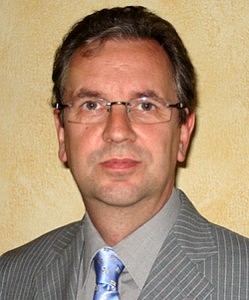Q&A: Wireless Backhaul via Satellite: Moving to 3/4G and HTSPosted on March 15, 2013 by iDirect

Mobile operators have long wanted to extend their networks beyond saturated core markets to rural and remote locations. Some have built out 2G networks with the help of satellite backhaul. The increasing use of mobile devices to connect to the Internet, though, has made geographic expansion potentially more valuable.
Several billion people in developed nations have voice service only, and as such, they are prime prospects for data service. A billion people in developing countries lack any connectivity at all, and mobile devices are may be their best option for Internet connectivity. Cisco projects that mobile data traffic will increase 18-fold worldwide by 2016, compared to 2011 figures. And the number of mobile connected devices will surpass 10 billion.
Historically, expanding into remote and rural markets has carried a high price tag. It’s not cheap to build cell towers across thousands of miles of terrain to reach towns and villages with small populations. And satellite bandwidth is not cheap either, especially when it comes to backhauling data traffic. It’s hard for mobile operators to see how they can service remote and rural areas while making a profit.
This picture is quickly changing today. iDirect director of market development, Richard Deasington, is set to explain at Satellite 2013 how several technologies are coming together to lower the cost of serving remote and rural markets and unlock new revenue opportunities. Here’s a quick look at what he plans to share.
What makes rural and remote markets suddenly profitable?
We are seeing three major developments happen at once. First, the price of mobile devices has been dropping, and now there are affordable options available everywhere. Second, small cell devices have emerged as a cost-effective alternative to macro cells, changing the core economics of mobile infrastructure expansion. And third, High Throughput Satellites (HTS) are coming online, bringing abundant capacity to constrained regions and promising significantly lower costs for satellite service. These three improvements together are enabling mobile operators to profitably expand their services into untapped markets.
How do small cells lower the cost of expanding mobile infrastructure?
Small cell devices are compact base stations that boost coverage in high traffic areas. They were originally developed as a home base station in rural areas. They are then used in core markets to handle peak traffic loads in public areas like shopping malls and sports stadiums.
Mobile operators are realizing today that they can take the same small cell infrastructure and use it in rural and remote areas to act as a local base station. You just need a site to locate the device, a source of power and a backhaul network. Compared to macro cells, small cell devices are much cheaper to own and install. They have low power requirements and are easier to bring into a network. And they can provide data rates similar to DSL.
How will HTS make IP satellite backhaul more affordable?
HTS delivers higher throughput at lower costs. Across the industry, it’s widely expected that HTS will lower the price of capacity by a factor of three. Again, that’s especially important when you consider that it takes much more capacity to backhaul data in contrast to voice traffic. This, combined with highly efficient shared IP satellite infrastructure makes satellite backhaul of 3G/4G traffic not just feasible – but profitable.
What is the payoff for mobile operators?
This is an opportunity for mobile operators to gain new and loyal subscribers. Operators can also offer roaming connectivity to travelers. And they can provide business customers with service levels that can support mobile banking, e-commerce and other data applications. Once you bring 3G and 4G networks online, it spurs economic and social development, which creates even more network demand.
To hear more insights about HTS and the satellite backhaul, attend “Wireless Backhaul via Satellite: Moving to 3/4G and HTS” at Satellite 2013. The session is on Wednesday, March 20 from 4:45 – 5:45pm in room 201 at the Walter E. Washington Convention Center in Washington D.C.